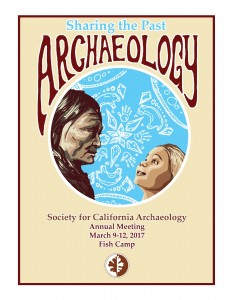Ancient human parallel lineages within North America contributed to a coastal expansion
BY C. L. SCHEIB, HONGJIE LI, TARIQ DESAI, VIVIAN LINK, CHRISTOPHER KENDALL, GENEVIEVE DEWAR, PETER WILLIAM GRIFFITH, ALEXANDER MÖRSEBURG, JOHN R. JOHNSON, AMIEE POTTER, SUSAN L. KERR, PHILLIP ENDICOTT, JOHN LINDO, MARC HABER, YALI XUE, CHRIS TYLER-SMITH, MANJINDER S. SANDHU, JOSEPH G. LORENZ, TORI D. RANDALL, ZUZANA FALTYSKOVA, LUCA PAGANI, PETR DANECEK, TAMSIN C. O’CONNELL, PATRICIA MARTZ, ALAN S. BORAAS, BRIAN F. BYRD, ALAN LEVENTHAL, ROSEMARY CAMBRA, RONALD WILLIAMSON, LOUIS LESAGE, BRIAN HOLGUIN, ERNESTINE YGNACIO-DE SOTO, JOHNTOMMY ROSAS, MAIT METSPALU, JAY T. STOCK, ANDREA MANICA, AYLWYN SCALLY, DANIEL WEGMANN, RIPAN S. MALHI, TOOMAS KIVISILD
SCIENCE01 JUN 2018 : 1024-1027 Read Full Article Here
Two parallel, terminal Pleistocene lineages gave rise to Californian, Central, and South American populations.
This original research was also referenced in a New York Times article here.







